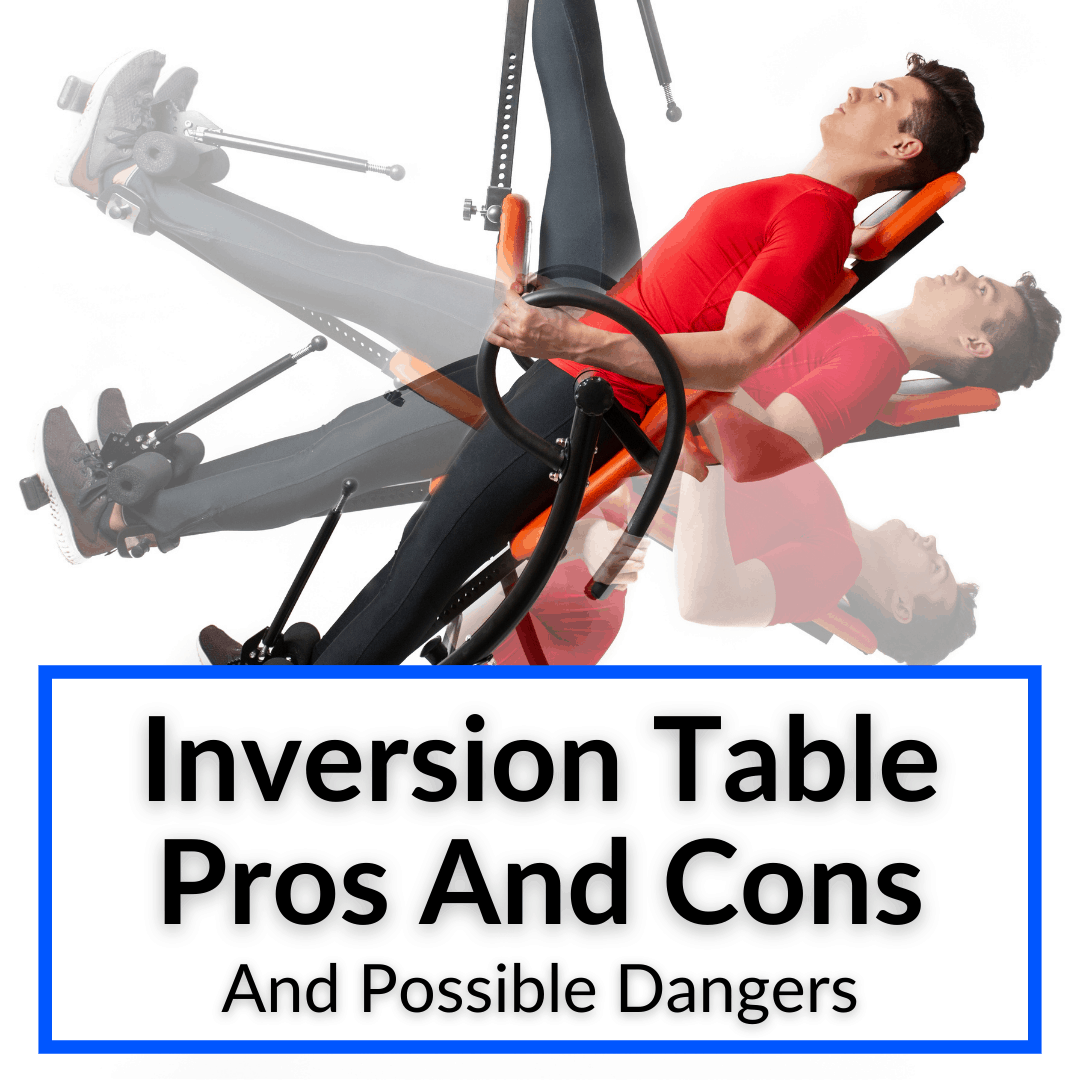 Inversion tables can be amazing for your back.
Inversion tables can be amazing for your back.
But they can also cause serious health issues.
It all depends on any pre-existing medical conditions you might have, as well as your current weight and pain tolerance.
For some, inversion therapy is a bad idea.
It can aggravate existing injuries, or cause new ones.
Always consult your doctor before using an inversion table. If he or she gives the go-ahead, you’re in for some wonderful benefits.
Keep reading to learn all of the pros and cons of inversion tables, and to get a better idea if this type of therapy could be beneficial to you.
Table of Contents
Benefits Of Inversion Tables
Inversion tables bring some great and most provide long-term benefits. You can spend a short amount of time on a table (as recommended), and reap the benefits for years to come.
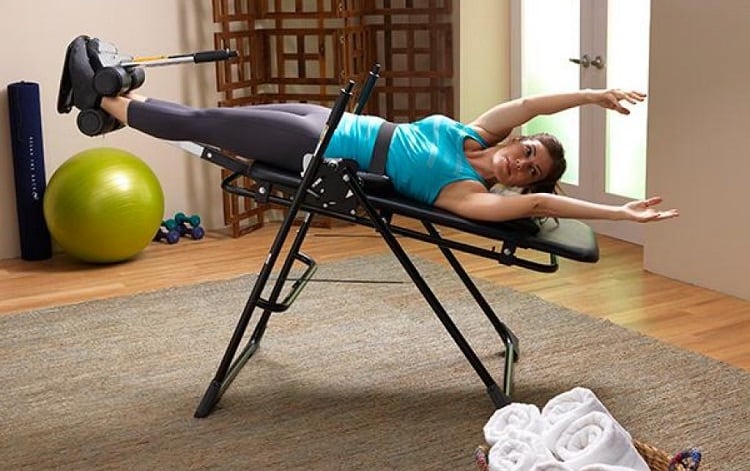
Immediate Back Pain Relief
When you flip upside-down and the inversion table starts to work its magic, your spine begins decompression. This is something you’ll have to do consistently each week (possibly each day), but it gives you instant back pain relief.
People want to wait for that cracking sound, which is the auditory indicator that your body is releasing pent-up gasses stored between your joints and spinal bones. But that’s not where the magic is.
Because you’re stretching your spine out and giving your body the necessary room to move fluid between your discs and temporarily relieve the effects of gravity, you’ll see widespread positive effects.
Non-Invasive Treatment
It’s actually possible to use inversion therapy with an inversion table to forego spine surgery. In many cases, spine surgery is correcting an issue caused by the constant strain of gravity, or the lack of fluid between discs.
You can prevent slipped discs, as well as muscle-related problems, and actually improve your back health. The good thing here is that, as we’ll find out in a moment, you save money compared to other treatment options as well.
Extremely Inexpensive Compared To Surgery
The recovery time from spine surgery can average from twelve to sixteen weeks. That is roughly four months where you may be too frail to even work and earn an income.
Sixteen weekly paychecks down the drain.
Apart from the income loss, which won’t be covered by anyone, you’re also looking at an extremely expensive procedure to get surgery on your spine.
With inversion therapy, even if you’re paying for it and not using your own table, you’re going to pay far less than the cost of surgery, a hospital stay, and the income interference that follows.
This is true even for the top inversion table models on the market.
But they are best used as a preventative measure. In many cases, once your body is at the point that you need surgery, there’s no going back. Get on this now so you don’t have to regret it later.
Athletic Benefits
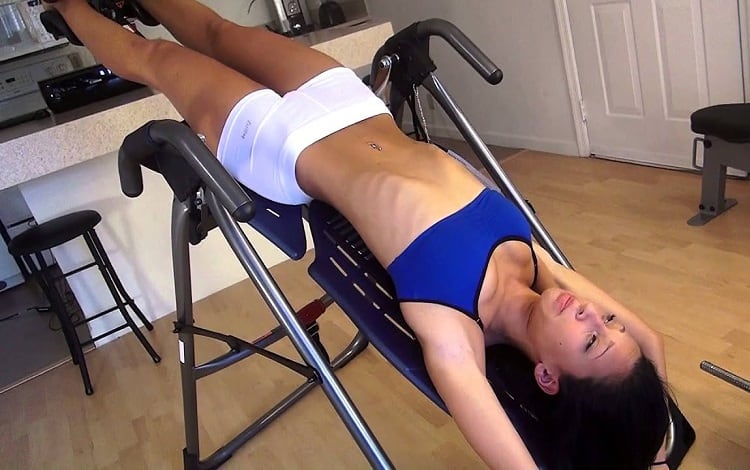
In general, inversion therapy can improve your athletic abilities. Rather, it can help to minorly amplify what athletic ability is already there.
Inversion therapy either maintains your spine’s posture or puts it back in the right place, removes lower back pain, and changes your center of gravity.
That last one is important. In just about all athletic endeavors, your ability to balance is paramount.
Without stress focusing on your lower back, you’ll be able to focus on tension and physical stress on your body from athletic events and allocate that pressure to your center of gravity, rather than putting it all on your back.
Workout Benefits
With bad form, you won’t get any gains, or lose the calories that you think you’re losing based on apps and exercise equipment screen estimates.
Without proper posture, you can actually hurt yourself instead of help yourself.
Inversion therapy helps to keep your spine aligned, which means you’ll naturally lean into good posture when working out, especially if your inversion therapy occurs more than once per week.
It makes working out more efficient, and less painful so you won’t be holding your lower back the following day.
Better Disc Health
The discs in your back undergo serious damage from gravity. As they compress closer and closer together, less fluid travels between them.
The reason this is a problem is those discs help lubricate your bones, and prevent bone grinding. This can also lower your risk of splints, chipping, or other issues with slipped discs.
The fluid between your discs also carries necessary nutrients throughout your vertebrae, making it even more important.
When you decompress your spine with inversion table therapy, you’re allowing fluid to travel between those discs again. Consistent inversion therapy can actually help your body naturally repair your spine and back if you just let it.
Drawbacks Of Inversion Tables
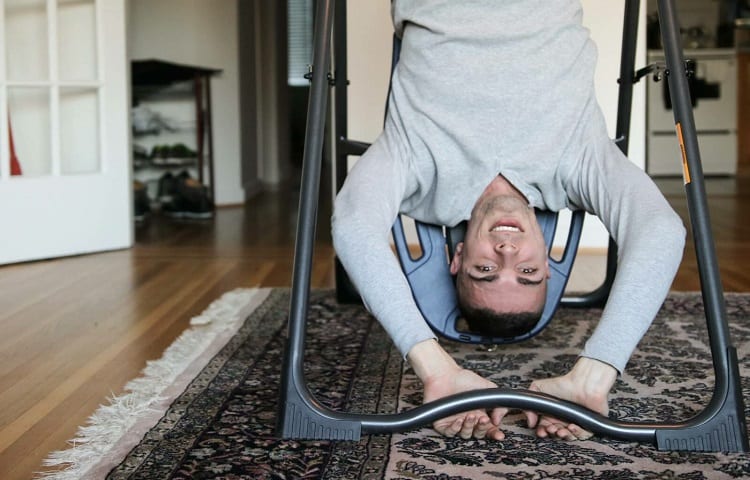
Inversion tables aren’t all good, though. A lot of their usefulness comes down to pre-existing conditions. If you have a bad neck, bad knees, or ankle problems of any sort, you should refrain from using them.
That, and high blood pressure. There are other issues with inversion tables as well.
Initial Upfront Cost
Inversion tables aren’t exactly something that most people talk about buying, so there are limited brands available to choose from. The thing is, inversion tables are either good or bad—there’s no in between.
As we know, the saying goes that you get what you pay for. In this case, you want something that supports you and works well, and there’s no room to knock price points back and forth
It’s worth the investment, but it can come at a sticker shock price (especially when you include ankle pads, floor mats, etc.). You can check out the best inversion tables currently available here.
Potential Injury Risk
In general, inversion tables come with a risk, even if you’re fit. You’re going upside-down and stretching out your spine, all while locking your ankles into straps and putting pressure on your joints.
You’re at a higher risk of injury even if you’re fit, but if you’re overweight or have issues with your joints, then you’re looking at some potential serious problems.
Hernias
Inversion tables aren’t going to cause hernias on their own. But they can make your hernias worse. Along with hernias, they can make muscle tears, cartilage problems, and ligament issues worse as well.
Inversion therapy has an adverse effect on these problems, which narrows the scope of people who can actually use inversion therapy effectively and safely.
Pressure In The Eyes
Glaucoma is a serious health issue. If you have it, you’re unfortunately restricted from using an inversion table. Extra blood pressure that’s sent to your eyes can make glaucoma issues worse.
It’s called intraocular pressure, and it could have damaging, long-term effects outside of what glaucoma already does to your body.
As we can see, there are some users with pre-existing medical conditions that cannot use inversion tables.
If you’re extremely out of shape, inversion tables may also pose issues with increased blood pressure and a spike in your risk of heart attack and stroke, depending on the situation and the patient.
Inversion tables are beneficial, though, so if you’re currently exploring weight loss goals, make it a point to hit a level where you can utilize inversion therapy to your advantage.
Inversion Table Pros Vs Cons: Which Side Wins?
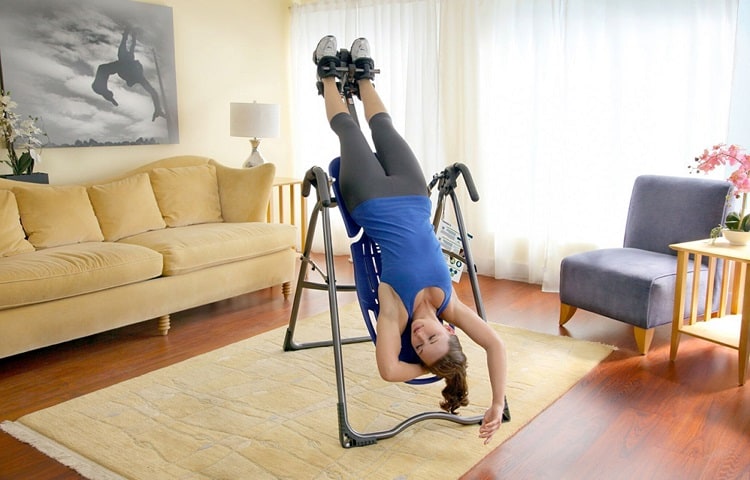
As long as you can control the variables, like using ankle pads, having someone to supervise you, and knowing what you’re getting into, then the benefits outweigh the drawbacks.
However, you have to look at what you’re like before you even attempt using an inversion table.
Are your knees frail?
Do you have fragile ankles?
Are you healthy enough to attempt using an inversion table?
Inversion tables can alleviate pain that you’ve been feeling for years (even decades), help your posture, and prevent you from undergoing expensive and physically taxing extensive surgeries with long recovery times (which will put you out of work for the duration).
Yes, the benefits are fantastic. But you do have to be pragmatic about using an inversion table.
Inversion Table Pros And Cons: Final Thoughts
When you look at the pros and cons, you’ll find that most of the time, inversion tables are a great benefit.
But health issues or a generally low fitness level can mean that inversion therapy is not a viable choice for you.
Fortunately, we have a guide on how to decompress your spine without an inversion table, which is the most common use of one.
This means you can actually get some of the benefits of an inversion table without having to use one, which is great for those with preexisting health conditions.
Note: This article was not written by a chiropractor or physician. While we research our articles and do our best to provide solutions, do not attempt anything revolving around spinal decompression, inversion, or pain management without seeking out help from your primary healthcare provider first. We are a website, not a medical community.
Great article, good info. My question is how long one have to be on the table to get the benefits of it.
Marino
At what degree of angle is best for doing inverted situps?